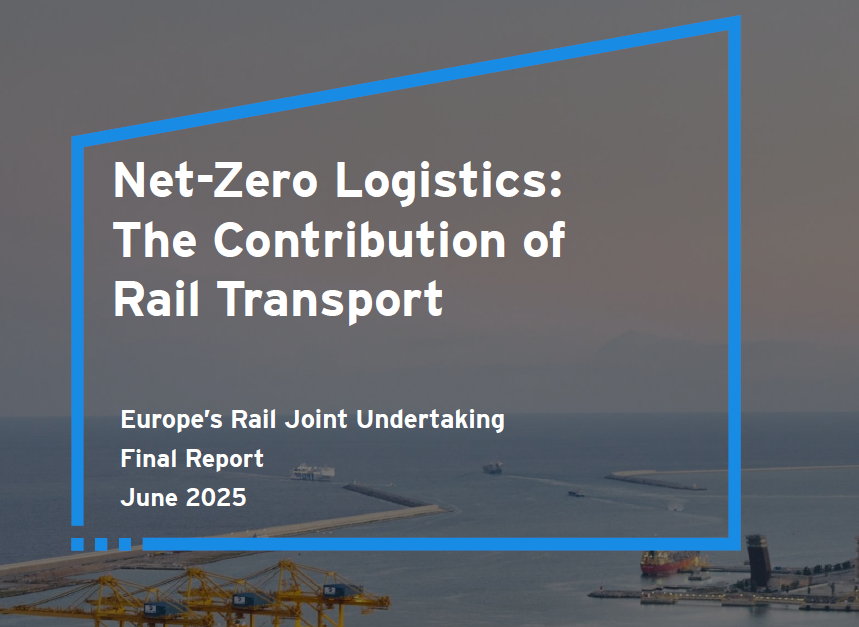Europe must take decisive steps to simplify and modernise its rail systems to strengthen competitiveness,...
Use of MVDC transformers for railway traction
Description: The deliverable presents the mathematical model of two converter topologies along with the design equations of their controllers, both full-scale and small-scale (equivalent of the experimental board). The focus is to undertake a comparative evaluation of topologies for the medium voltage DC transformers, to define the optimal topology for railway traction applications including evaluation of the performance of the converter and to develop a software model for the prediction of static and dynamic performance of the DC transformer, as well as an experimental prototype.
Target audience: All rail stakeholders
How it brings us closer to achieving better rail for Europe: After the two converters being compared, the Dual Active Bridge (DAB) modules was proved to be a simpler and more cost-performance effective solution for the traction system. Its suitability and performance was proved via the full-scale software model on the whole range of possible catenary voltage. The efficiency of full-bridge topologies proposed in previous work within the Project was validated through both converter topologies and the short literature review about the power density and efficiency as well. Such a novel system opens new opportunities and functionalities of an interoperable smart DC grid. At the same time, the new system will combine the advantages of various new technology and the advantages of current railway electrification systems.
More information on this topic: MVDC-ERS and RAILS
Performance and characteristics of static converters for MVDC rail power supplies
Description: The deliverable exhibits the selection of modular multilevel converter with full-bridge submodules (MMC-FB) for the proposed medium voltage DC railway electrification system. Furthermore, it presents the developed small-scale prototype of MMC-FB, and investigates its performance and the document reviews the technical key performance indicator (KPI) “c”, “validation process”.
Target audience: All rail stakeholders
How it brings us closer to achieving better rail for Europe: Results show that the developed control system is able to properly synchronise the produced arm voltages with the AC grid. It also regulates the capacitor voltages, while the converter draws balanced and high quality AC currents from the grid. Therefore, the converter can properly feed the DC side load.
More information on this topic: MVDC-ERS and RAILS
Operational KPIs, analysis of users satisfaction
Description: Compare the operational KPIs listed in the project plan to the actual KPIs being used and track to assess the performance of IP4 functionalities and update about the terminology used by the project. Moreover, the deliverable distributes the updated version of the USI (User Satisfaction Index) survey to a representative sample of Travellers and TSPs at each demo site (Athens, Padua, Barcelona, Osijek, Liberec, and Warsaw) of the IP4MaaS. This updated version includes questions about functionalities addressing specific needs and expectations identified for some profiles through a “sentiment analysis” and “conversational surveys”. A refined version of the formula to calculate the USI for Travellers is accurate.
Target audience: All rail stakeholders
How it brings us closer to achieving better rail for Europe: Contributing to assess the performance on the ground of new IT functionalities provided by the railways sector through satisfaction surveys filled by Travellers and TSPs and operational KPIs.
More information on this topic: IP4MaaS
Experimental assessment of the most promising alternative bearers in rail
Description: The deliverable contains results on the performance assessment of the eligible Alternative Bearers (AB), such as FSO, HAPS, and LEO, concerning their applicability to the rail scenarios. Limitations and challenges are analyzed, including features as their maturity and availability in the market. Finally, in the deliverable simulation results obtained considering a real railway in Italy (Rome-Florence) are illustrated.
Target audience: All rail stakeholders
How it brings us closer to achieving better rail for Europe: It evidences the opportunities offered by eligible ABs (FSO, LEO, and HAPS), especially from the coverage and data rate point of view. The identified benefits in terms of a major guaranteeing of QoS/QoE requirements targets required by the rail applications regard non only the rail stakeholders but also rail passengers. Some relevant solutions and preliminary recommendations are given, as learned from the analysis of the state-of-the-art and a survey conducted among the railway stakeholders.
More information on this topic: AB4RAIL
Analysis of options for transport and application protocols and of their secure versions
Description: The deliverable contains the results on the analysis of options for the transport and application protocols and their secure versions. The performances of different combinations of application and transport protocols have been analyzed considering for different traffic categories that can be traced back to the ACS traffic classes. Protocol performances have been assessed reproducing the behavior of the communication bearers as seen at IP protocol level and it allows to account for the variations with time of the typical packet impairments characterizing the IP layer link such as: bandwidth, latency and packet loss rate.
Target audience: All rail stakeholders
How it brings us closer to achieving better rail for Europe: The analysis of the transport and application protocols describes their technical features and the benefit they can bring to the rail context. The assessment of their security features evidences the capability of one transmission protocol (at the transport or application level) to protect against one or more risks is related to the presence of specific functionalities implemented in the protocol itself. The main output of this activity is a Table indicating the most appropriate (secure) transport and transport/application protocol to be selected for the ACS application class.
More information on this topic: AB4RAIL
Specification and design of a common database for rail AI training and testing
Description: The deliverable defines from a high-level perspective a common database to be utilized for AI training and validation within the railway sector. This database shall enable developing perception systems which are robust and safe enough to make autonomous rail operation possible. To this end, the main tasks reported in this deliverable are: an analysis of the state-of-the-art databases from the automotive sector as a very valuable input; identification of the most relevant database use cases; definition of the envisioned database, i.e., collection of the high-level requirements, design of the functional architecture, specification of data acquisition/generation processes and data labelling criteria; consideration of other aspects of data management; the establishment of access and contribution policies, and the development of a first instance of the database as proof-of-concept.
Target audience: All rail stakeholders
How it brings us closer to achieving better rail for Europe: It proposes an architecture (validated through a proof-of concept) of a data factory for AI datasets for the whole European railway community, enabling the testing, validation and ultimately the certification of the perception systems based on AI, enabling their use autonomous rail vehicles.
More information on this topic: TAURO
Report on Artificial Intelligence Modelling
Description: The deliverable focuses on empowering the Mathematical Computational Models developed in Task with the use of AI. Emphasis is given on a specific class of AI models that can be used to solve optimization problems, used in railway maintenance planning.
Target audience: All rail stakeholders
How it brings us closer to achieving better rail for Europe: The usage of AI in the railway track maintenance problem will enable the identification of the optimal time instants where specific activities need to be performed. These activities span from routine maintenance activities that involve inspections and small repairs performed with frequencies varying between monthly and annual up to extensive maintenance carried out once or twice every few years.
More information on this topic: DAYDREAMS
Report on the current state-of-art and identification of innovative concepts for transition zones
Description: This deliverable identifies techniques for mitigating problems related to transition zones with reference to their limitations, advantages and reported case studies. In addition, the use of new materials and techniques which are promising for improving the performance of transition zones is also discussed.
Target audience: Infrastructure managers
How it brings us closer to achieving better rail for Europe: Several different mitigation techniques for transition zones have been proposed worldwide and, in some cases, applied in-situ. The mitigation techniques are categorized according to their primary objective while parties involved in the research, design, and construction of solutions for transition zones have been identified, demonstrating the benefit of further research on this maintenance key area of the railway network.
More information on this topic: IN2ZONE
















